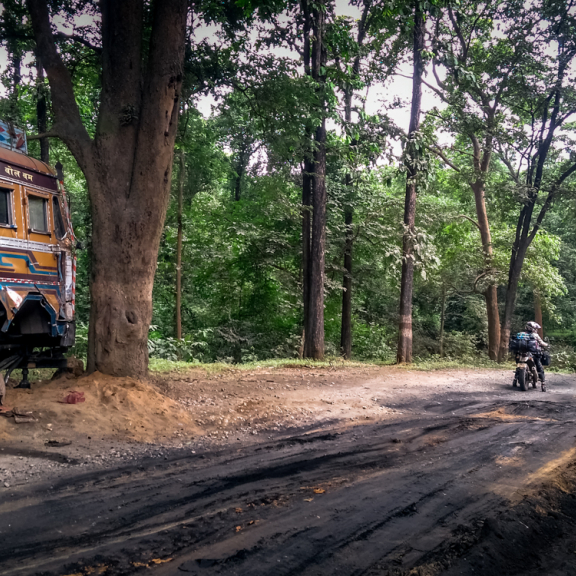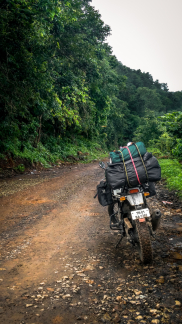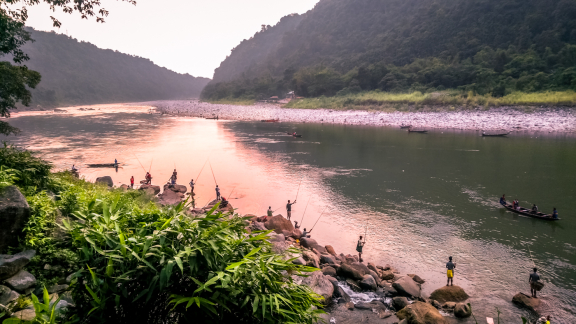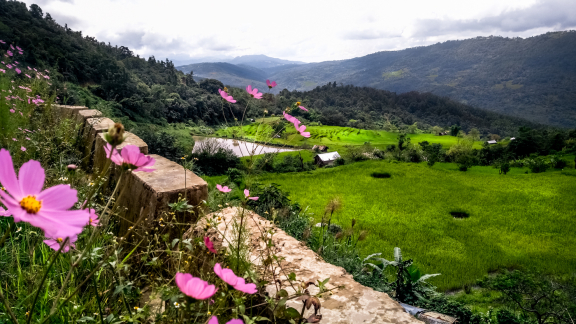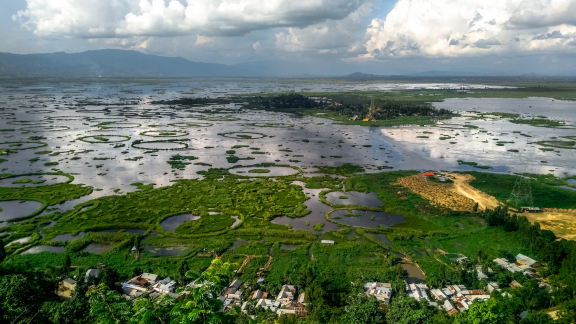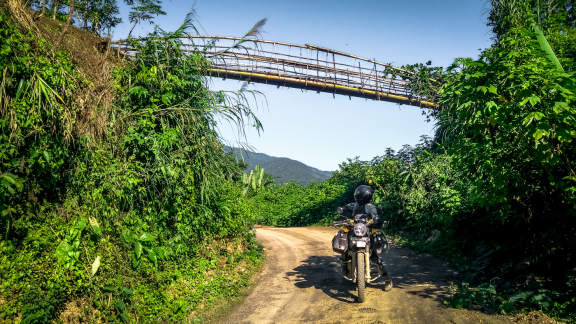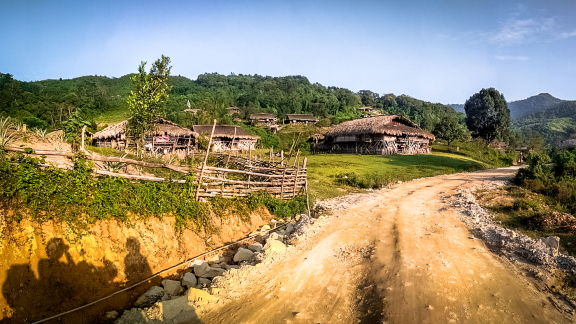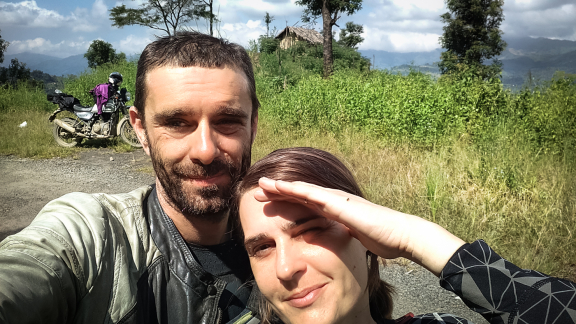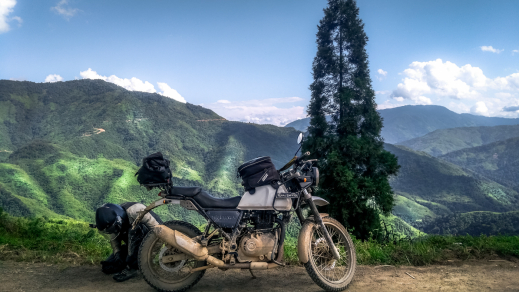Eastern India Express
Angela and Dennis... an Indian itinerary by motorcycle
As every year, an Indian itinerary by motorcycle unfolds in front of us, absolutely to be done through remote and un-touristy areas but with surprisingly ecstatic scenarios, views, peoples, historical monuments and natural reserves. A shy “Why are you here?!?” is not an unusual question, and we: “We travel, we are on vacation.” And they always a little surprised: “Yes, but why?!? The places we choose and love to visit are mainly touched by local or regional tourism and meeting 2 foreigners, on motorbikes, without Indian friends, without a guide, and who also live in a large Indian city is always a bit bizarre. And this is how the road becomes the yardstick of the world and of the universe itself, because it is the road, with its regular flow, which takes us through new places, food, people, landscapes, animals and encounters.
In India the combinations of them are almost endless. From Chennai in Tamil Nadu (the southernmost state of the sub-continent and our second home in the last 10 years) to the Indian borders with Burma, China and Bangladesh and back again, without ever taking the same road. Sometimes taking roads that not even maps knows, relying only on local people and luck, driven by a thirst for adventure and a good spirit of adaptation.
We are ready for 2 months of travel and, as always, we decide to explore areas unknown to us, and to many. We leave our home in Chennai at 4.45 but the Indian megalopolis is already waking up. We must ride 600km to reach Rajahmundry in order to leave the highway for secondary and country roads. The highway in India is not exactly smooth, it passes through entire towns and people, animals, vehicles pass quietly from one side of the highway to the other. And then you meet vehicles in the wrong direction, walls of stinking trucks trying to overtake each other for endless time, cows (but also dogs, deer, buffaloes, horses, donkeys, goats, etc.) who graze on the median and carelessly cross the highway stopping here and there. Furthermore, many times there is work in progress and consequently diversions, restrictions and a lot, a lot of dust.
We leave Rajahmundry the following sunrise and head to the hills of Andhra Pradesh, unfortunately the hotels outside the tourist areas are often dirty, neglected and expensive. The hills gently guide us for days through the forests and villages of Andhra, Orissa, Chhattisgarh. We enter Jharkhand, a state that does not enjoy a good reputation due to the presence of Maoist rebels. The simple mud and bamboo houses are wonderful and the fields are lush and well kept. People are humble, shy but kind.
We decide to spend a few days in the hill station of Netarhat, surrounded by jungle, fog and peasant life; here we enjoy walks and the picturesque weekly market.
When we leave, we see many anti-terrorism soldiers along the roadside or hidden among stones and vegetation. In Jharkhand’s forests, not only Army and Maoists are hiding, but also ancient temples and abandoned forts, vestiges of pastern glories. We enter Bihar and the rain starts, we leave the hills and the countryside for a while because we have to cross the Ganges and this is only possible in 2 places. Unfortunately, due to heavy downpours, India’s most sacred river has flooded the plains. Luckily, we manage to cross without problems but the monsoon doesn’t give up and persecutes us for days.Finally, we reach the Siliguri isthmus in West Bengal, it’s the gateway to the North East. W.B. is the most difficult place to ride in India because it is overpopulated, the roads are narrow, overcrowded, and the drivers, especially of buses, are very aggressive.
We reach Guwahati in Assam and spend a few days at the home of our Assamese friend. It’s a nice and lively city, the food is fantastic and it is the perfect place to buy the last things before leaving for the mountains. Guhawati greets us with a surprise, taking the old road to Shillong (Meghalaya), we cross a traditional Assamese procession with elephants, songs, music, and food. We take a blessing on the fly and proceed to Pynursula, a village not far from the chaotic Shillong.
A must-stop is the famous Dawki River with its crystal-clear waters, assaulted by hordes of daytime tourists and forgotten by night. Here we spend a magical night in the tent with the waterway by our side and a million of stars over our heads. After leaving the stream we take an old and almost forgotten road that crosses a couple of tiny villages, an abandoned military base and an old dam.Immersed in the jungle, we slide on the mountains and through the green vegetation; sometimes we meet passersby (lumberjacks or hunters) or some vehicle.
To enter Manipur from Meghalaya we have to pass through the hot, dusty, extremely busy plain of south Assam, but fortunately the excellent food repays us for the effort. Manipur is beautiful, wild and with wide roads, almost never paved, crossing forests and villages populated by friendly and heartfelt people. We fall in love with it immediately.
Climbing uninhabited mountains, we reach a pass and a plain opens up surrounded by peaks, sprinkled with small farming villages, rice fields that seem combed by a giant and so green to dazzle you with their reflections.
We spend a few days on Lake Loktak admiring its waters and the unique fish farms, for which circular pools are created with mud, stone and grass walls, recreating a prehistoric scenario. Life flows at a different pace in Manipur and time seems to have stopped on the lake. Here, thanks to our hotelier, we are lucky to try many local dishes which are a hybrid between Assamese and Burmese cuisine; probably the best food of the whole trip. But the road calls us and so we plunge into the silent and almost unpopulated jungle again.This will be our habitat for the next 40 days. In Manipur every day is full of surprises and sometimes they are bad. In the middle of a coniferous forest the rear-rack breaks. We secure it as we can, put the cargo bag of Givi between the 2 of us and ride 30 km to reach the village of Jessami. Arrived at the destination we find a welder who, in flip flops and sunglasses, manages to fix it. The work isn’t good-looking but resistant.
We leave Manipur for Nagaland and the rain comes again. The path we have chosen for Nagaland does not have paved roads, but only holes, stones, and mud, a lot of mud. Here we discover the existence of 3 types of mud, NORMAL, MEDIUM and VERY MUDDY. It slows us down; we fall and it literally swallows us up. The mud is the road and now it is also part of us. We are moving very slowly so we have to overnight in random villages along the way.
In Nagaland’s rural areas there are no restaurants and hotels, but with the help of the local population and the priests we are always welcomed and fed. At Kiphire, due to a landslide, we are stuck for 2 days. Luckily, the local police show us an alternative route, not present on Maps, and provide us with the list of settlements that we must cross. It takes us 2 days whereas the police claimed that it would take only 1. On this road villagers run away when we ask for directions. After days and days of forest and rare encounters we arrive to Mon which at first sight looks like a metropolis to us.
We decide to go to Longwa, the famous village of head hunters, lying on the ridge of a mountain that divides Burma from India; and the view is definitely phenomenal.
From Nagaland we travel to Arunachal Pradesh, driven by the promise, made the year before to a dear Arunachali friend, to spend a few days with him and his family. We want to cross Arunachal from east to west by making incursions into the adjacent valleys. After a few days of riding and some halts, we arrive in Basar where our friend Marge lives. We spend some fantastic days in the villages of his ancestors, fishing, walking, listening to old stories, eating chicken and vegetables cooked in bamboo and sleeping in small huts. It is a great thrill when the woman, with the most beautiful voice of the place, comes to sing for us, illuminated only by the fire.
We reluctantly leave Basar to continue towards the western Himalayan areas of the state, sleeping in several hamlets. We spend a few days of relaxation and regenerating walks in Sangti. Then we also go to Tenzingaon, a Tibetan refugee village, where we meet an old couple who welcome us with stories, liqueur and food. After 20 days we leave Arunachal and begin our return journey.
In Guwahati we say goodbye to the majestic Brahmaputra river and our hearts are tightening, because to reach Chennai we must travel almost 3000 km of hot plains, traffic, dust, chaos, rivers of people and works in progress. That’s why, in India, the shortest road, many times is also the toughest. Every day from sunrise to sunset Dennis rides, we stop only to sleep.
We decide to spend a few days in the magical Puri, a sacred city in Odisha. The city’s mysticism is contagious and for us it is the ideal place to recharge our batteries before facing the last 3 days of hard ride to home.
The protagonist
Dennis and Angela
The protagonist
Dennis and Angela
Angela and Dennis are 2 Italian teachers of foreign languages (Italian she, German he) who have been living in Chennai, India for 10 years where they work as teachers. The love for this bizarre and varied country, which always surprises even the most accustomed and shrewd travelers, has bewitched and possessed them, pushing them to explore India in its most remote corners, in its most fascinated and forgotten meanderings.
It is precisely this desire for discovery, of almost surgical analysis that has led them to become almost motorcyclists, certainly a little naif, but enthusiastic about physical and cultural freedom and that only this vehicle can give. The motorcycle has pushed them to travel in many other Asian countries in Europe, and in Central America.
Their journeys are made of itineraries of discovery and usually the chosen road is the longest, most winding, muddy and forgotten possible, but it offers landscapes and memories marked in the mind by the fire of uniqueness.

